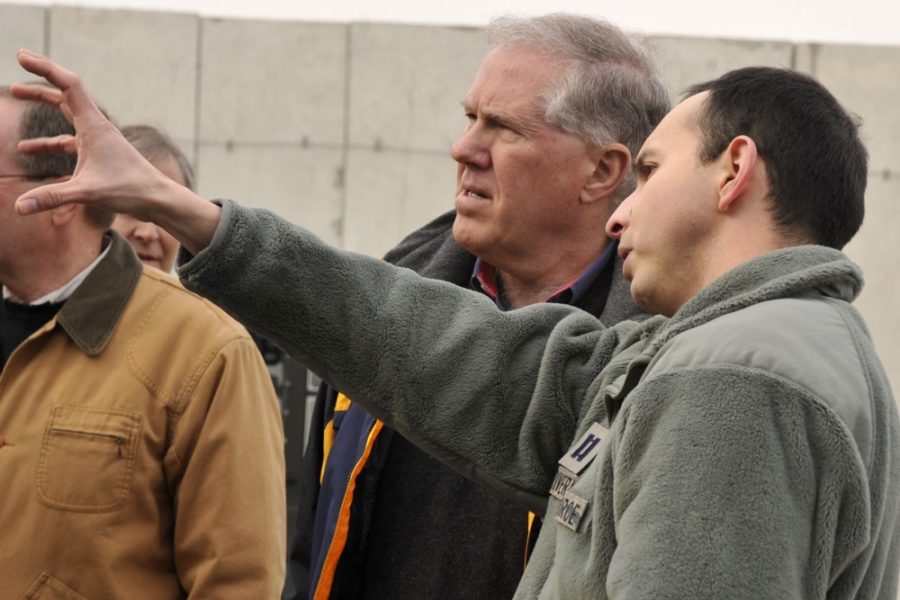Frank Kendall III will testify before the Senate Armed Services Committee on May 25 in a hearing that will likely lead to his confirmation and eventual swearing in as the 26th Secretary of the Air Force.
If confirmed, Kendall would succeed Barbara M. Barrett as the Secretary of a department that includes both the U.S. Air Force and U.S. Space Force, where he would be responsible for organizing, training, and equipping some 697,000 Active, Guard, Reserve, and civilian Airmen and Guardians. John P. Roth has been the acting Secretary since Jan. 20, when President Joe Biden was sworn in as Commander in Chief.
Kendall, 71, was undersecretary of defense for acquisition, technology, and logistics, a position Congress split into two jobs four years ago. Serving under the Obama administration, he oversaw research and engineering, sustainment, testing, contract administration, and logistics.
Now he hopes to bring that defense-wide experience to the Department of the Air Force. His confirmation hearing, coming just three days before the White House releases its fiscal 2022 budget request, will be marked by Senators’ probing questions about the Air Force’s commitment to major acquisition programs ranging from the F-35A stealth fighter to the Ground-Based Strategic Deterrent—a replacement for the force’s 400 aging Minuteman III nuclear missiles. He will also be asked about Air Force plans to trade near-term fighter capacity for long-term modernization, which could have major implications for bases and manufacturers spread across the country.
If confirmed, Kendall will get the tough job of selling Congress on those plans while fighting for a bigger share of overall defense spending at a time when budgets are projected to be relatively flat but modernization needs are getting squeezed and peer adversaries such as Russia and China are ramping up their military investments.
Air Force Magazine reported on “pre-decisional” Air Force plans calling for retiring 421 older fighters from 2022 to 2026 while acquiring just 304 new ones, a net reduction of 117. That plan seeks to phase out the F-15C/D fleet, reduce the size of the F-16 fleet by 124 aircraft, and retain the A-10 attack jet until the 2030s while building up the F-15EX and F-35A fleets. By then, the plan suggests, it will be time to retire the F-22 fighter and introduce the Next-Generation Air Dominance platform.
Another area of questioning Kendall will face is nuclear modernization. The Air Force operates two of the three legs of the nation’s nuclear triad: nuclear-capable bombers and intercontinental ballistic missiles. Democrats on Capitol Hill are pressing to “pause” the Ground Base Strategic Deterrent program rather than move forward with tens of billions in investment to replace the Minuteman III.
Questions will likewise focus on the nascent U.S. Space Force and what its requirements will be over the coming years. Space Force Vice Chief of Space Operations Gen. David D. Thompson told members of the House Armed Services subcommittee on strategic forces May 24 that the service has made significant progress creating a blueprint as it works to establish a “truly digital service.” In its second year, Thompson said, the Space Force is working on building partnerships with the Joint Force as well as with allies and partners.
Kendall’s acquisition experience will be put to the test as some lawmakers question the pace of space acquisition reform. “Progress in addressing longstanding acquisition issues has been disappointing so far,” said Rep. Betty McCollum (D-Minnesota) during the Department of the Air Force posture hearing earlier this month. Similar questions are likely to come up during the confirmation hearing.
As acquisition chief in the Obama years, Kendall’s signature “Better Buying Power” initiative sought to streamline defense acquisition. That experience could be valuable in a service that is historically on the cutting edge of technology where existing acquisition processes often aren’t flexible enough for emerging solutions.
Former Air Force Undersecretary Matthew P. Donovan, now director of AFA’s Mitchell Institute Space Power Advantage Research Center, said Kendall will have his work cut out for him. If confirmed, Kendall will face “a familiar challenge of declining defense budgets at a critical time for the Department of the Air Force and its fledgling U.S. Space Force,” Donovan said. “He would need to strongly support all Airmen and Guardians, staunchly advocate for the crucial importance of air and space power in support of the joint warfighter and great power competition, and set clear visions for the future” of both the Air Force and Space Force.
